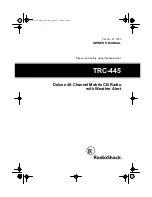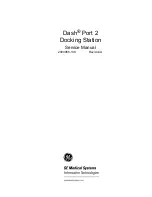
13
Mounting the Sensor on a Pipe
To mount the sensor on a pipe, stake, or
pole with outside diameter between
1" and 1-1/4" (25 mm and 31 mm), secure
the sensor to the pipe using the 1-1/2"
U-bolts, 1/4" flat washers, and 1/4" hex
nuts as shown below. Use a 7/16" wrench or
adjustable wrench to tighten the hex nuts.
Installing Soil Moisture & Temperature Sensors
The soil acts as a reservoir to store water between irrigation or rainfall events, so
that it is available to the crop or plants as needed for healthy growth. The purpose of
using sensors to measure the soil water is to give you a better understanding of how
fast water is being depleted in the different areas of your field or lawn, so you can
better schedule your irrigations and correctly evaluate the true effectiveness of any
rainfall. By monitoring the soil moisture between irrigations, you will gain a more
accurate picture of this process over time, and develop an irrigation scheduling pat-
tern to meet your crop’s “need” for water. This minimizes the guesswork, resulting
in water savings, lower pumping costs, and the elimination of excess leaching of
nitrogen due to over irrigation.
While not absolutely necessary for operation, we recommend that a temperature
probe be installed with each soil moisture sensor. This allows the soil moisture sen-
sor’s readings to be temperature compensated for better accuracy.
Note:
WATERMARK Soil Moisture Sensor information based on material supplied by Irrometer Com-
pany, Inc.
Connecting Soil Moisture and Temperature Sensors
1. Run the sensor cables up through the grommets on the bottom of the station
housing.
2. Connect the temperature probes to the TEMP connectors.
3. Connect soil moisture probes to the SOIL connectors
Each matched temperature probe and soil moisture pair must use the matching con-
nectors. If a temperature probe is not used, the soil moisture reading can be off as
much as 1% for every 1
°
F (0.5
°
C) difference between the actual soil temperature
and the default value. If no soil temperature probe is used for a particular soil mois-
ture sensor, the soil temperature #1 value is used if present. Otherwise, the console
Mounting on a Pipe






































